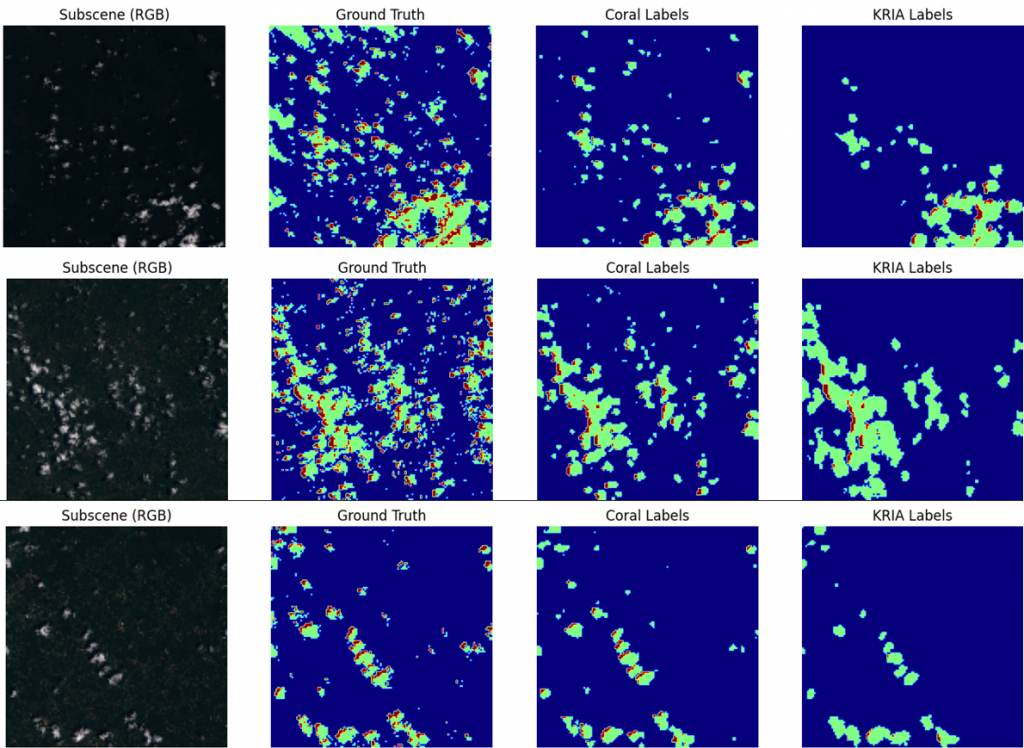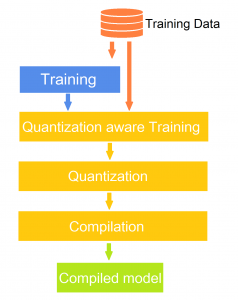Cloud Detection
In the evolving landscape of Earth observation, accurate cloud detection is a crucial component for ensuring high-quality satellite imagery. As part of GIASaaS -our Satellite-as-a-Service platform, we have developed an advanced AI-powered cloud detection system that ensures higher-quality satellite imagery for downstream applications such as precision agriculture, environmental monitoring, and disaster response. The presence of clouds in satellite images can obstruct critical information, making it essential to filter out cloud-covered areas effectively.
A sneak Pic to what we can do

The cloud detection model was developed using a dataset of Sentinel-2 satellite images and corresponding masks from the Sentinel-2 Cloud Mask Catalogue. The model achieved an accuracy exceeding 80%, ensuring reliable identification of Cloud, No Cloud, and Cloud Shadow regions. To enable real-time deployment, the model underwent quantization and optimization, reducing its size from 270MB to 37MB, an 86% reduction while maintaining its segmentation performance. This optimization allows seamless execution on Xilinx KRIA and Google Coral edge devices, delivering inference speeds of 1.5 seconds on KRIA and 1.75 seconds on Coral.
Deep dive into our solution

We built a deep learning model based on U-NetV2, a well-established architecture for semantic segmentation, capable of classifying each pixel of a satellite image into one of three categories: Cloud, No Cloud, and Cloud Shadow, ensuring precise and reliable segmentation. By leveraging convolutional encoder-decoder networks, our model effectively captures both low-level spatial details and high-level contextual information, allowing it to precisely detect cloud coverage even in challenging atmospheric conditions.

To deploy this technology efficiently on edge devices, we developed a custom AI pipeline that supports both Google Coral and Xilinx KRIA, two powerful AI accelerators optimized for real-time inference. The pipeline includes model quantization, optimization, and compilation, ensuring that the cloud detection model maintains high accuracy while running efficiently on edge hardware with limited computational resources
This approach significantly reduces the need for large-scale cloud computing, enabling real-time, on-device processing for faster decision-making and reduced bandwidth costs. By integrating this AI-driven solution into our satellite data platform, we are enhancing the accessibility and usability of clear, high-quality Earth observation data, empowering industries with more reliable and actionable insights from space.
Our Vision
By extending our AI pipeline to cloud detection, we reinforce our commitment to scalable, modular, and deployable AI solutions for Earth observation. This innovation ensures clearer data, better forecasts, and improved decision-making across multiple fields.
